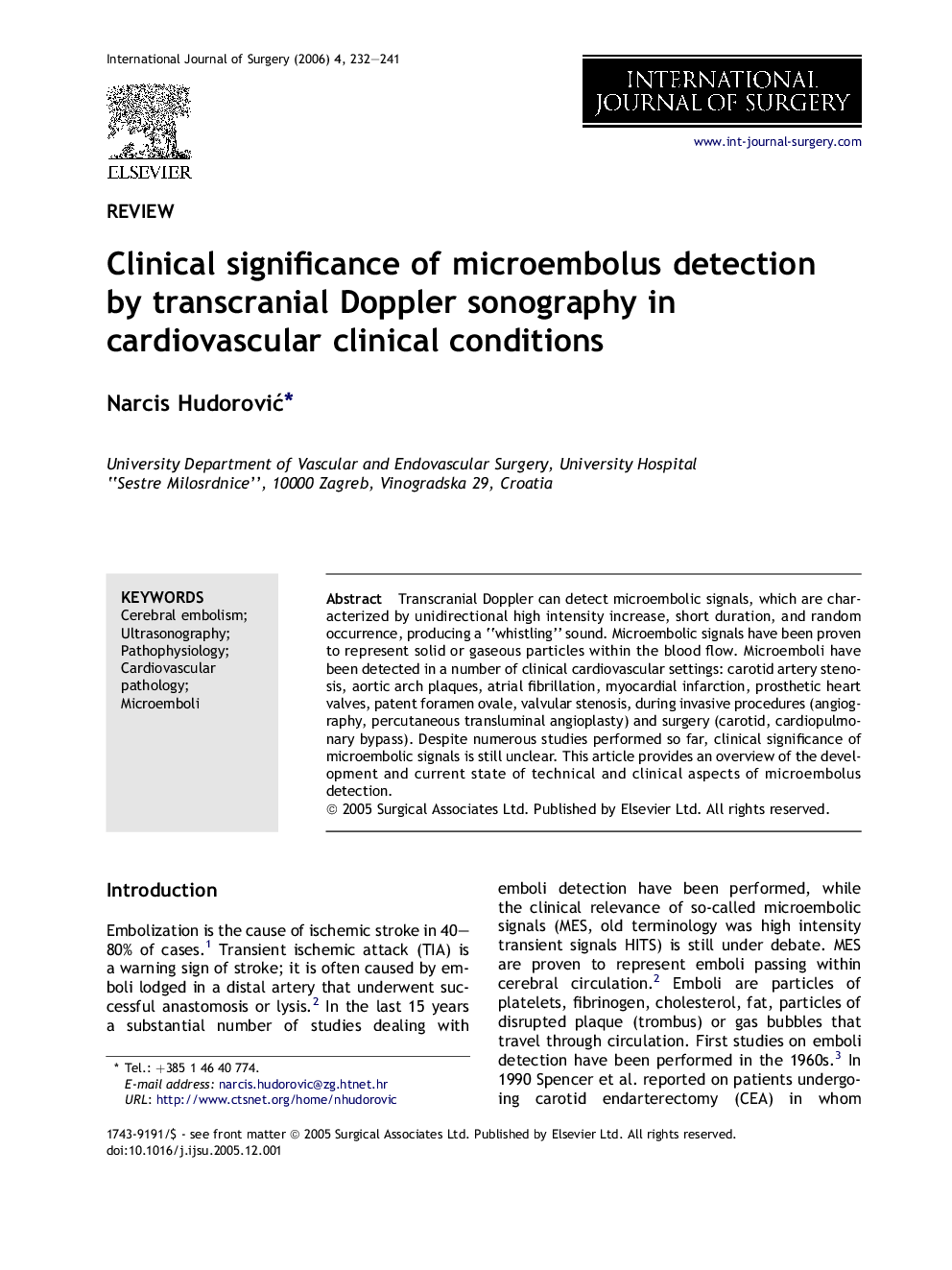| Article ID | Journal | Published Year | Pages | File Type |
|---|---|---|---|---|
| 4287952 | International Journal of Surgery | 2006 | 10 Pages |
Transcranial Doppler can detect microembolic signals, which are characterized by unidirectional high intensity increase, short duration, and random occurrence, producing a “whistling” sound. Microembolic signals have been proven to represent solid or gaseous particles within the blood flow. Microemboli have been detected in a number of clinical cardiovascular settings: carotid artery stenosis, aortic arch plaques, atrial fibrillation, myocardial infarction, prosthetic heart valves, patent foramen ovale, valvular stenosis, during invasive procedures (angiography, percutaneous transluminal angioplasty) and surgery (carotid, cardiopulmonary bypass). Despite numerous studies performed so far, clinical significance of microembolic signals is still unclear. This article provides an overview of the development and current state of technical and clinical aspects of microembolus detection.
